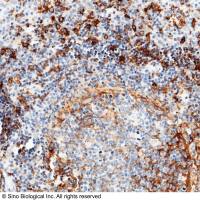14 Immunotargeting of Catalase to the Pulmonary Vascular Endothelium
Hydrogen peroxide formed in the lung tissue in ischemia/reperfusion or released from activated leukocytes causes oxidative injury of the vascular endothelial cells (1 –3 ). H2 O2 -degrading enzyme, catalase, has been extensively explored in order to protect cells and tissues against H2 O2 -mediated injury (4 ). Catalase, however, has short lifetime in the bloodstream and provides only marginal protective effect after intravascular administration in animals (5 ). Catalase modification (conjugation with polyethylene glycol (6 ) or encapsulation in liposomes [7 ]), prolongs catalase lifetime in the circulation and facilitate its cellular uptake. These modifications, however, do not provide it with an affinity to the endothelial cells. In order to provide catalase with such an affinity, catalase could be chemically conjugated with a carrier antibodies recognizing the surface endothelial antigens (8 ). A monoclonal antibody (MAb) against such an antigen, angiotensin-converting enzyme (anti-ACE MAb 9B9, produced by Dr. Sergei M. Danilov [9 ]), accumulates in the pulmonary endothelium after systemic injection (10 ). Therefore, MAb 9B9 may serve as an affinity carrier for targeting of catalase to the pulmonary endothelial cells, for specific augmentation of their antioxidative defense.
![预览]()






